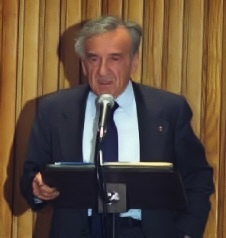Cern's Large Hadron Collider Closer to Recreating "Big Bang" Theory

Engineers operating the Large Hadron Collider (LHC) have smashed together proton beams in the machine for the very first time.
The step was described as a “great achievement” for those working on the huge physics experiment.
The low-energy collisions came after researchers circulated two beams simultaneously in the LHC’s 27km-long tunnel earlier on Monday.
The LHC is smashing together beams of protons to shed light on the cosmos.
Operated by the European Organization for Nuclear Research (Cern), the LHC is the world’s largest machine and will create similar conditions to those present moments after the Big Bang.
Scientists will search for signs of the Higgs boson, a sub-atomic particle that is crucial to our current understanding of physics.
Although it is predicted to exist, scientists have not yet detected it.
Researchers working on the collider have said they are delighted with the quick progress made since the machine restarted on Friday.
“It’s a great achievement to have come this far in so short a time,” said Cern’s director-general Rolf Heuer.
“But we need to keep a sense of perspective – there’s still much to do before we can start the LHC physics programme.”
Smashing news
Housed in a tunnel 100m beneath the Franco-Swiss border, the LHC uses some 1,200 “superconducting” magnets to bend proton beams in opposite directions around the tunnel at close to the speed of light.
At allotted points around the “ring”, the proton beams cross, smashing into one another with enormous energy.
Large “detector” machines located at these crossing points will scour the wreckage of the collisions for discoveries that could roll back the frontiers of knowledge.

The giant Atlas detector was the first to see collisions
|
The four main detectors at the LHC are: Atlas, the Compact Muon Solenoid (CMS), Alice and LHCb. Atlas and CMS are so-called multi-purpose detectors, while Alice and LHCb are designed with more specific scientific investigations in mind.
Cern’s director of communications, Dr James Gillies, said the first collisions had taken place just as a news conference was under way on Monday to discuss progress following the machine’s restart at the weekend.
“We didn’t have time to analyse them then. We waited until all four of the (detectors) had seen good candidates (for collisions),” he told BBC News.
Quick progress
The giant Atlas detector was the first to record candidate collisions at 1322 GMT. But CMS failed to see any on the first try. Alice and LHCb saw their first candidate collisions after 1600 GMT.
Operators then went back and adjusted the beam to generate collisions in the Compact Muon Solenoid detector. This time, they were successful, with the first candidates seen at around 1820 GMT.
Fabiola Gianotti, spokesperson for the Atlas scientific team, commented: “This is great news, the start of a fantastic era of physics and hopefully discoveries after 20 years’ work by the international community.”
The spokesperson for the Alice experiment, Jurgen Schukraft, said cheers erupted with the first collisions.
“This is simply tremendous,” he said.
Engineers restarted the LHC on Friday evening after a 14-month hiatus while the machine was being repaired.
It had to be shut down shortly after its inauguration when an electrical fault led to magnets being damaged and to one tonne of liquid helium leaking into the tunnel.





